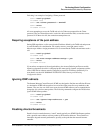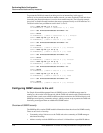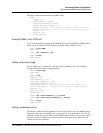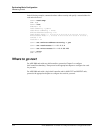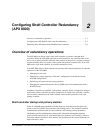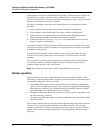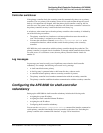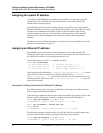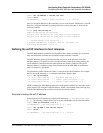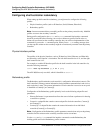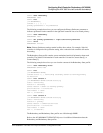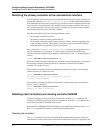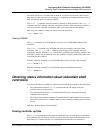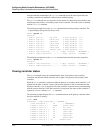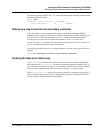
Configuring Shelf-Controller Redundancy (APX 8000)
Configuring the APX 8000 for shelf-controller redundancy
APX 8000/MAX TNT/DSLTNT Physical Interface Configuration Guide Preliminary May 9, 2000 2-5
admin> set ip-address = 192.168.100.2/24
admin> write
IP-INTERFACE/{ { shelf-1 right-controller 1 } 0 } written
After you assign IP addresses to the controllers, you can verify that the TAOS unit is a valid IP
host on its configured networks by pinging other hosts on those networks, as shown in the
following example:
admin> ping 192.168.100.56
PING 192.168.100.56: 56 Data bytes
64 bytes from 192.168.100.56: icmp_seq=0 ttl=255 time=0 ms
64 bytes from 192.168.100.56: icmp_seq=1 ttl=255 time=0 ms
--- 192.168.100.56: Ping statistics ---
2 packets transmitted, 2 packets received, 0% packet loss
round-trip min/avg/max = 0/0/0 ms
Defining the soft IP interface for fault tolerance
The APX 8000 supports an internal soft IP interface that is always available. It is associated
only with the primary controller and is hidden from the secondary controller.
The APX 8000 sets up the soft IP interface after you power on the unit and a controller
becomes primary. If a switchover occurs and the secondary controller becomes primary, the
soft IP interface is initialized and associated with the new primary controller. The soft IP
interface address is reachable as long as one IP interface on the APX 8000 (on an Ethernet
card, for example) is operational.
The IP-Interface profile with the zero index is reserved for the soft IP interface. For example,
the first line of the following dir command output shows the zero index:
admin> dir ip-interface
6 06/17/1999 03:06:00 { { any-shelf any-slot 0 } 0 }
19 06/21/1999 23:54:02 { { shelf-1 left-controller 1}0}
19 06/25/1999 17:45:30 { { shelf-1 right-controller1}0}
If RIP is enabled, the APX 8000 advertises the soft IP interface address as a host route (with a
prefix length of /32) using the loopback interface. If RIP is not enabled, routers one hop away
from the APX 8000 must have a static route to the soft interface address.
Example of setting the soft IP address
You activate the soft IP interface by entering an IP address for {{ any-shelf any-slot
0} 0}. The following example shows how to set the soft IP address to 192.168.100.128/24:
admin> read ip-interface { 0 0 0 }
IP-INTERFACE/{ { any-shelf any-slot 0 } 0 } read
admin> set ip-addr = 192.168.100.128/24
admin> write
IP-INTERFACE/{ { any-shelf any-slot 0 } 0 } written



